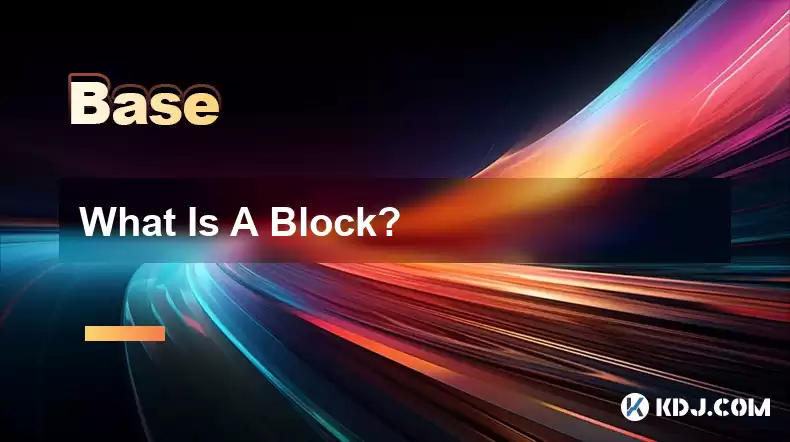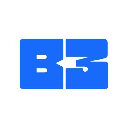-
 Bitcoin
Bitcoin $115000
0.12% -
 Ethereum
Ethereum $3701
4.50% -
 XRP
XRP $3.081
2.99% -
 Tether USDt
Tether USDt $0.0000
-0.01% -
 BNB
BNB $767.9
1.45% -
 Solana
Solana $169.5
3.13% -
 USDC
USDC $0.9999
0.01% -
 Dogecoin
Dogecoin $0.2106
4.30% -
 TRON
TRON $0.3334
1.62% -
 Cardano
Cardano $0.7564
2.54% -
 Stellar
Stellar $0.4165
0.76% -
 Hyperliquid
Hyperliquid $38.75
0.25% -
 Sui
Sui $3.593
3.00% -
 Chainlink
Chainlink $17.08
3.59% -
 Bitcoin Cash
Bitcoin Cash $573.6
4.35% -
 Hedera
Hedera $0.2508
-0.84% -
 Avalanche
Avalanche $23.07
6.46% -
 Ethena USDe
Ethena USDe $1.001
-0.02% -
 Litecoin
Litecoin $120.8
8.17% -
 UNUS SED LEO
UNUS SED LEO $8.943
-0.32% -
 Toncoin
Toncoin $3.400
-5.60% -
 Shiba Inu
Shiba Inu $0.00001255
1.54% -
 Uniswap
Uniswap $9.908
6.32% -
 Polkadot
Polkadot $3.718
2.10% -
 Monero
Monero $303.0
-0.74% -
 Dai
Dai $0.9999
-0.02% -
 Bitget Token
Bitget Token $4.392
0.91% -
 Cronos
Cronos $0.1403
6.31% -
 Pepe
Pepe $0.00001076
1.13% -
 Aave
Aave $267.2
1.80%
What Is A Block?
Blocks, the foundational units of a blockchain, serve as immutable ledgers containing verified and timestamped transactions, forming an unbreakable chain of records that ensures transparency and security.
Dec 14, 2024 at 10:18 pm

Delving into the Foundation of Blockchain: Comprehending the Block
In the realm of blockchain technology, the block stands as a cornerstone, serving as an immutable and cryptographically secure repository of information. To unravel its fundamental significance, let us embark on a comprehensive exploration of what a block entails.
1. Foundation of Blockchain: The Block
Blocks form the building blocks of a blockchain, analogous to the pages of a ledger. Each block contains a collection of transactions, meticulously verified and timestamped. Once a new block is finalized, it is cryptographically linked to the preceding block, creating an unbreakable chain of records. This immutable ledger provides a transparent and tamper-proof record of all transactions conducted on the blockchain.
2. Structure of a Block: Unveiling its Components
A block is meticulously structured, comprising essential elements that ensure its integrity and functionality. These components include:
- Block Header: The header contains vital information such as the block's version, timestamp, and references to the previous and subsequent blocks. It acts as a metadata summary, encapsulating the block's identity and position within the blockchain.
- Transaction List: This section houses an ordered collection of transactions processed within a specific time frame. Each transaction encapsulates details such as sender and recipient addresses, amount transferred, and any additional relevant data.
- Nonce: A nonce is a random or semi-random number that serves as a puzzle piece. Miners must solve a complex cryptographic problem to find a valid nonce, a process known as mining. This ensures the security of the blockchain against malicious actors.
- Hash: Each block is assigned a unique hash, a cryptographic fingerprint. The hash is recalculated whenever a change is made to the block, and any discrepancies between the stored and recalculated hashes indicate a tampering attempt.
3. Function of a Block: Unlocking its Role within the Blockchain
Blocks serve multifaceted roles within the blockchain ecosystem:
- Transaction Validation and Ordering: They facilitate the validation and sequencing of transactions, ensuring the integrity and reliability of the blockchain.
- Decentralization and Consensus: Blocks contribute to the decentralized and distributed nature of the blockchain. Through consensus mechanisms, nodes reach an agreement on the validity of a block, preventing any single entity from controlling or altering the blockchain.
- Immutability and Security: The cryptographic linking of blocks and the hashing mechanism render the blockchain tamper-proof. Once a block is added to the chain, it becomes virtually impossible to modify or delete, safeguarding the integrity of transaction data.
4. Merkle Trees: Understanding Data Structuring within Blocks
Merkle trees are employed within blocks to efficiently verify transaction integrity. They organize transactions into a hierarchical structure, where each transaction is summarized and linked to its neighboring transactions. This allows for efficient verification of a specific transaction without the need to traverse the entire block.
5. Size and Capacity of Blocks: Exploring Limitations and Optimization
Blocks have finite capacity limitations, necessitating ongoing optimization efforts. As the blockchain grows, so does the size of individual blocks. However, increasing block size can impact performance and scalability. Blockchain developers continuously explore innovative solutions, such as block partitioning and sharding, to address these challenges.
6. Confirmation and Finality: Understanding Transaction Statuses
Once a transaction is included in a block, it undergoes a confirmation process. The number of confirmations required for a transaction to be considered final varies depending on the specific blockchain network. This process ensures the immutability of the transaction and provides increased confidence in its validity.
7. Orphan Blocks: Addressing Potential Blockchain Irregularities
Under certain circumstances, a block may become an orphan block, meaning it is not linked to the main blockchain. This can occur due to network issues or competing miners finding multiple valid blocks simultaneously. Orphan blocks are eventually discarded, ensuring the integrity of the blockchain.
Disclaimer:info@kdj.com
The information provided is not trading advice. kdj.com does not assume any responsibility for any investments made based on the information provided in this article. Cryptocurrencies are highly volatile and it is highly recommended that you invest with caution after thorough research!
If you believe that the content used on this website infringes your copyright, please contact us immediately (info@kdj.com) and we will delete it promptly.
- Velo Universe, DEX, and DeFi Security: Navigating the Future of Decentralized Trading
- 2025-08-05 09:25:13
- Bitget Wallet Revolutionizes Solana with Gas-Free Transactions: A New Era for DeFi
- 2025-08-05 09:25:13
- Cryptocurrency, Altcoins, and Profit Potential: Navigating the Wild West
- 2025-08-04 14:50:11
- Blue Gold & Crypto: Investing Disruption in Precious Metals
- 2025-08-04 14:30:11
- Japan, Metaplanet, and Bitcoin Acquisition: A New Era of Corporate Treasury?
- 2025-08-04 14:30:11
- Coinbase's Buy Rating & Bitcoin's Bold Future: A Canaccord Genuity Perspective
- 2025-08-04 14:50:11
Related knowledge

What is the difference between CeFi and DeFi?
Jul 22,2025 at 12:28am
Understanding CeFi and DeFiIn the world of cryptocurrency, CeFi (Centralized Finance) and DeFi (Decentralized Finance) represent two distinct financia...

How to qualify for potential crypto airdrops?
Jul 23,2025 at 06:49am
Understanding What Crypto Airdrops AreCrypto airdrops refer to the distribution of free tokens or coins to a large number of wallet addresses, often u...

What is a crypto "airdrop farmer"?
Jul 24,2025 at 10:22pm
Understanding the Role of a Crypto 'Airdrop Farmer'A crypto 'airdrop farmer' refers to an individual who actively participates in cryptocurrency airdr...

What is the difference between a sidechain and a Layer 2?
Jul 20,2025 at 11:35pm
Understanding the Concept of SidechainsA sidechain is a separate blockchain that runs parallel to the main blockchain, typically the mainnet of a cryp...

What is the Inter-Blockchain Communication Protocol (IBC)?
Jul 19,2025 at 10:43am
Understanding the Inter-Blockchain Communication Protocol (IBC)The Inter-Blockchain Communication Protocol (IBC) is a cross-chain communication protoc...

How does sharding improve scalability?
Jul 20,2025 at 01:21am
Understanding Sharding in BlockchainSharding is a database partitioning technique that is increasingly being adopted in blockchain technology to enhan...

What is the difference between CeFi and DeFi?
Jul 22,2025 at 12:28am
Understanding CeFi and DeFiIn the world of cryptocurrency, CeFi (Centralized Finance) and DeFi (Decentralized Finance) represent two distinct financia...

How to qualify for potential crypto airdrops?
Jul 23,2025 at 06:49am
Understanding What Crypto Airdrops AreCrypto airdrops refer to the distribution of free tokens or coins to a large number of wallet addresses, often u...

What is a crypto "airdrop farmer"?
Jul 24,2025 at 10:22pm
Understanding the Role of a Crypto 'Airdrop Farmer'A crypto 'airdrop farmer' refers to an individual who actively participates in cryptocurrency airdr...

What is the difference between a sidechain and a Layer 2?
Jul 20,2025 at 11:35pm
Understanding the Concept of SidechainsA sidechain is a separate blockchain that runs parallel to the main blockchain, typically the mainnet of a cryp...

What is the Inter-Blockchain Communication Protocol (IBC)?
Jul 19,2025 at 10:43am
Understanding the Inter-Blockchain Communication Protocol (IBC)The Inter-Blockchain Communication Protocol (IBC) is a cross-chain communication protoc...

How does sharding improve scalability?
Jul 20,2025 at 01:21am
Understanding Sharding in BlockchainSharding is a database partitioning technique that is increasingly being adopted in blockchain technology to enhan...
See all articles

























































































